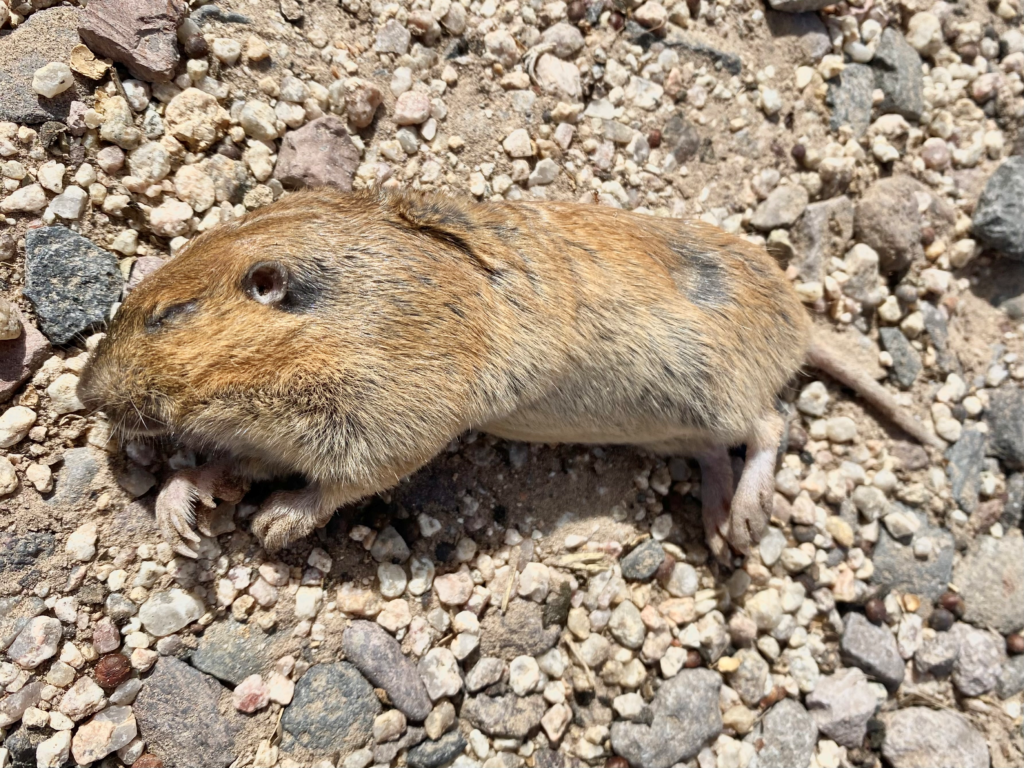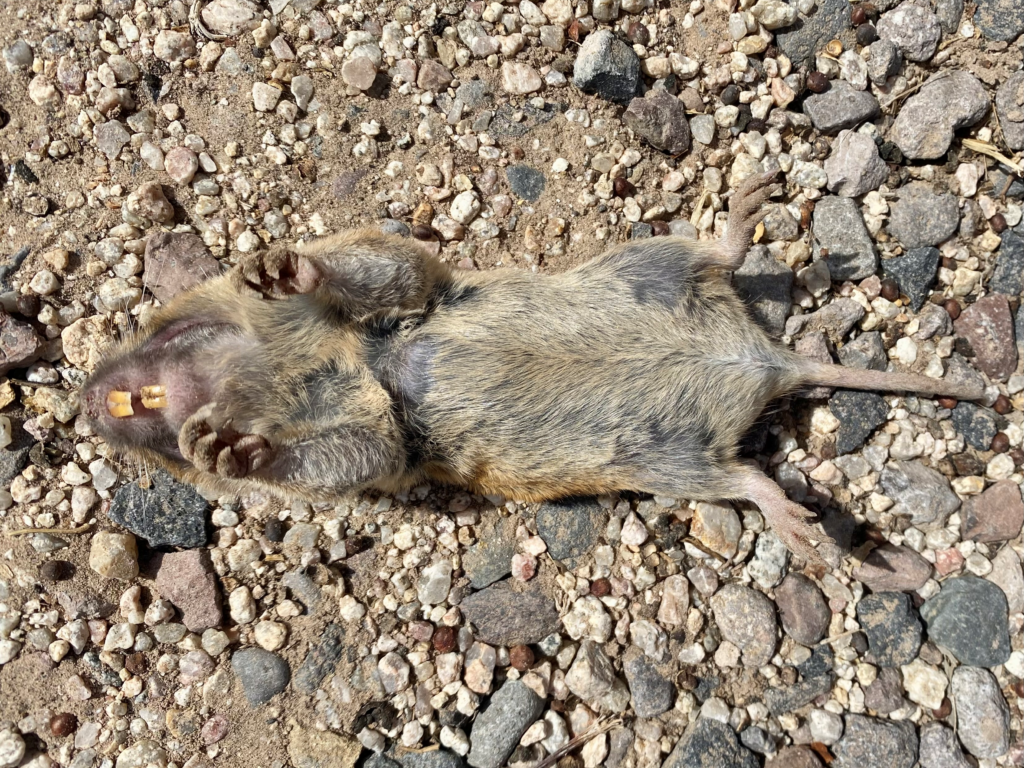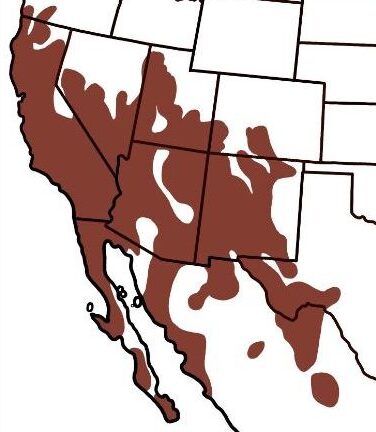Botta’s Pocket Gopher, Thomomys bottae

 Botta’s Pocket Gopher, Tomomys bottae. Trapped in a residential community, Puerto Adolfo Lopez Mateos, Baja California Sur, January 2024. Body Length: 20 cm (7.9 inches). Catch courtesy of Dick Lohrke, Virginia City, Montana. Photograph courtesy of Brad Murakami, Surrey, British Columbia, Canada.
Botta’s Pocket Gopher, Tomomys bottae. Trapped in a residential community, Puerto Adolfo Lopez Mateos, Baja California Sur, January 2024. Body Length: 20 cm (7.9 inches). Catch courtesy of Dick Lohrke, Virginia City, Montana. Photograph courtesy of Brad Murakami, Surrey, British Columbia, Canada.
Botta’s Pocket Gopher, Thomomys bottae, is a member of the Geomyidae family of gophers. The Geomyidae Family consists of forty-one species placed in six genera. There are ten species in the Thomomys genus and approximately one hundred eighty-five subspecies of Thomomys bottae. Botta’s Pocket Gopher is also known as the Pocket Gopher and the Valley Pocket Gopher and in Mexico as Tuza de Botta and locally as Topo.
Botta’s Pocket Gophers have robust bodies with short, strong limbs and sharp front claws. Their eyes and ears are very small and rounded. They are characterized by their external fur-lined cheek pouches and sharp upper incisors that lack frontal grooves. Their tail is short and naked at the tip. Their fur is short, smooth, and varies in color depending upon their environment. In general, darker individuals can be found in high elevations and lighter individuals can be found in low elevations. This is likely due to greater rainfall in the highlands, which causes the soil to become darker in color than the dry, pale soil of the lowlands. Their dorsal fur ranges in color from gray, to brown, to tan, to black. Their ventral fur is only somewhat paler than their dorsal fur. The environment also affects the size of Botta’s Pocket Gophers. The largest individuals tend to be found in the highlands, medium-sized individuals tend to be found in the middle elevations, and the smallest individuals tend to be found in low tropical deciduous forest. This is likely due to the different soil conditions and nutritional quality of vegetation between environments. Sexual dimorphism is displayed with males growing considerably larger than females. They have a total length between 15 cm (5.9 inches) and 28 cm (11 inches), including a 5.5 cm (2.2 inch) to 9.2 cm (3.6 inch) tail. Their hind foot measures 2.7 cm (1.1 inches) to 3.2 cm (1.3 inches) in length. They weigh between 80 g (2.8 oz) and 250 g (8.8 oz).
Botta’s Pocket Gophers are generally solitary animals and spend a large portion of their life underground. They create burrow systems that are typically 1 m (3.3 feet) to 3 m (9.8 feet) below the ground and consist of permanent burrows and shallow tunnels used for feeding. Nesting chambers are smaller and cushioned with dry grasses, while storage chambers are larger and relatively bare. These specialized chambers have a diameter between 20 cm (8 inches) to 250 cm (8 feet). Feeding tunnels radiate outwards from the central permanent burrows. These tunnels are 5 cm (2 inches) in diameter and 13 cm (5 inches) to 46 cm 18 inches) deep. Unlike other burrowing species, Botta’s Pocket Gophers do not leave raised ridges above the ground. Rather, they build up fan-shaped mounds of soil at the side of their entrances. The entrances themselves are generally kept blocked with soil. While breeding typically occurs during the spring and summer, populations in agricultural areas and habitats with abundant food may reproduce year-round. Females can produce up to four litters per year, each containing between four and five offspring. Gestation lasts approximately nineteen to twenty-one days and the young are altricial, being born blind and without fur. Juveniles remain with their mother until they are weaned, about forty days after birth. They reach sexual maturity the following breeding season, usually at one year of age. They have an average lifespan of two to three years in the wild.
Botta’s Pocket Gophers are active during the day and night, they only emerge above ground at night. Adults maintain exclusive territories throughout the year. Once an individual has established a territory, they rarely move to a new one. Burrows are actively defended with aggressive behaviors. Aggressive encounters may result in bite wounds on their forepaws and everted cheek pouches. Botta’s Pocket Gophers communicate with vocalizations that are limited to clicking of teeth and soft sounds described as hisses, murmurs, purrs, or squeaks. They primarily forage underground, consuming roots, bulbs, and tubers. When they forage above ground, they consume a variety of plant species. They are preyed upon by American Marten, Badgers, Barn Owls, Coyotes, Foxes, Gopher Snakes, Great Blue Herons, Great Horned Owls, Long-eared Owls, Rattlesnakes, Red-tailed Hawks, and Weasels.

Botta’s Pocket Gopher can be distinguished from other species of burrowing mammals, such as Moles, Scapanus species, and Voles, Microtus species, by their larger size, large central incisors, and external fur-lined cheek pouches.
From a conservation perspective, Botta’s Pocket Gopher is currently considered to be of Least Concerndue to their wide distribution, presumed large population size, and tolerance of a broad range of habitats. No major threats have been identified for this species. Botta’s Pocket Gopher is considered to be an agricultural pest.